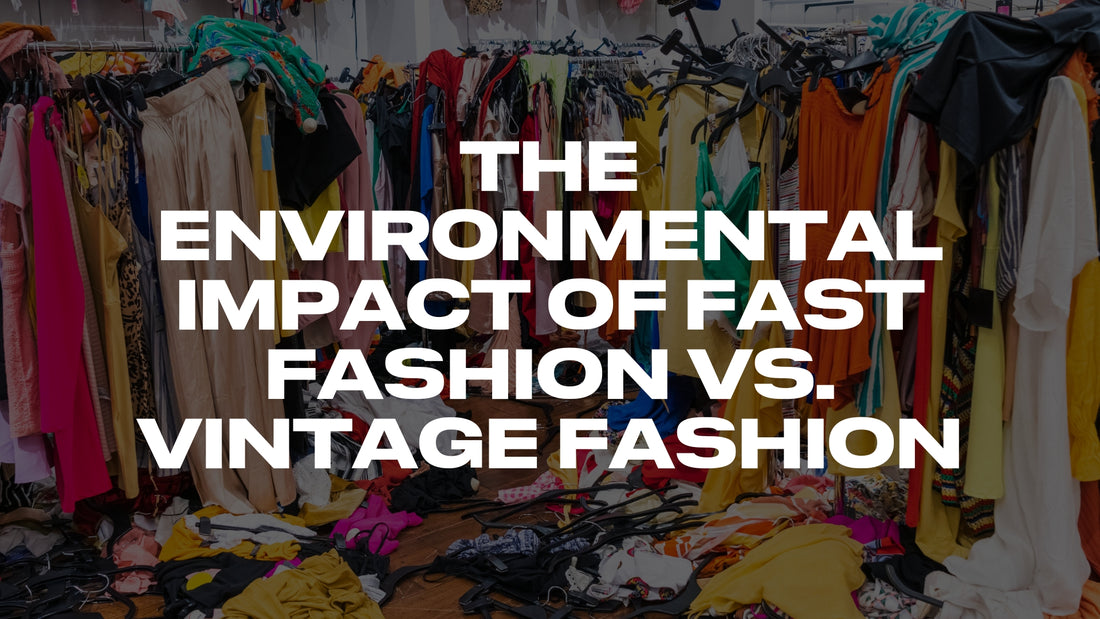
The environmental impact of fast fashion vs. vintage fashion
Share
Fast fashion has gained popularity in recent years, with big-name retailers constantly churning out new styles and trends at an alarming rate. This fast-paced approach to fashion has a significant environmental impact, as the production of new clothing requires a lot of energy and resources.
To begin with, the fashion industry is one of the largest polluters in the world. The production of synthetic fabrics, such as polyester and nylon, releases harmful chemicals into the air and water. These chemicals can have detrimental effects on both human health and the environment. In addition, the transportation of these garments from factories to stores also contributes to air pollution.
Furthermore, fast fashion promotes a throwaway culture, where cheap, trendy clothing is worn a few times before being discarded. This constant cycle of consumption and waste puts a strain on our planet's natural resources. The fashion industry is the second largest contributor to global water pollution, as the treatment of textiles uses a vast amount of water.
On the other hand, vintage fashion offers a more sustainable alternative. Vintage clothing has already been produced, so there is no additional strain on the environment in terms of energy and resources. In addition, vintage clothing is often of higher quality and can last longer, reducing the need for constant consumption.
By choosing vintage fashion, you can make a conscious decision to reduce your environmental impact and support a more sustainable way of consuming fashion. It's also a great way to add some unique, one-of-a-kind pieces to your wardrobe.
Overall, it's important to be mindful of the impact our fashion choices have on the environment. While fast fashion may be tempting due to its low prices and constant influx of new styles, it's important to consider the long-term consequences. Opting for vintage fashion not only helps the environment, but it also allows you to make a statement with your style.
To begin with, the fashion industry is one of the largest polluters in the world. The production of synthetic fabrics, such as polyester and nylon, releases harmful chemicals into the air and water. These chemicals can have detrimental effects on both human health and the environment. In addition, the transportation of these garments from factories to stores also contributes to air pollution.
Furthermore, fast fashion promotes a throwaway culture, where cheap, trendy clothing is worn a few times before being discarded. This constant cycle of consumption and waste puts a strain on our planet's natural resources. The fashion industry is the second largest contributor to global water pollution, as the treatment of textiles uses a vast amount of water.
On the other hand, vintage fashion offers a more sustainable alternative. Vintage clothing has already been produced, so there is no additional strain on the environment in terms of energy and resources. In addition, vintage clothing is often of higher quality and can last longer, reducing the need for constant consumption.
By choosing vintage fashion, you can make a conscious decision to reduce your environmental impact and support a more sustainable way of consuming fashion. It's also a great way to add some unique, one-of-a-kind pieces to your wardrobe.
Overall, it's important to be mindful of the impact our fashion choices have on the environment. While fast fashion may be tempting due to its low prices and constant influx of new styles, it's important to consider the long-term consequences. Opting for vintage fashion not only helps the environment, but it also allows you to make a statement with your style.
